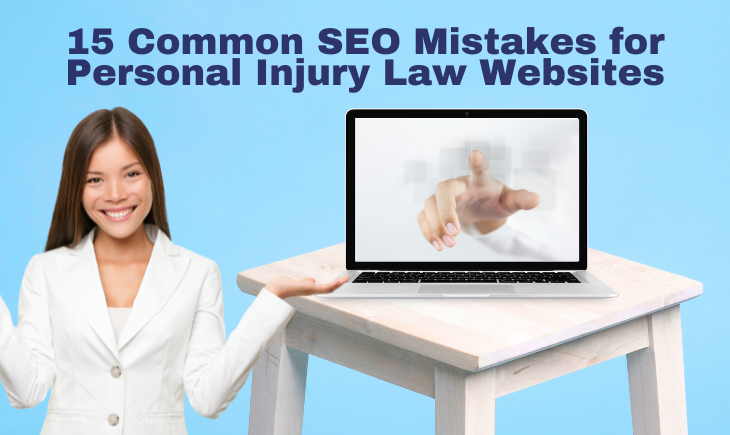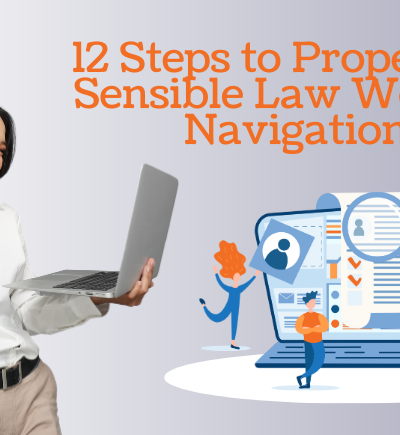Search engine optimization for personal injury law (SEO) improves a website’s visibility and drives organic traffic. However, it’s common for website owners to make mistakes that can negatively impact their SEO efforts. Here is an article outlining some common personal injury law SEO mistakes and suggestions on how to fix them:
1. Lack of Keyword Research
Conducting proper keyword research is a common mistake. To fix this, use keyword research tools (such as Google Keyword Planner or SEMrush) to identify relevant keywords and incorporate them strategically throughout your website’s content.
2. Poorly Optimized Titles and Meta Descriptions
Title tags and meta descriptions are vital for search engines and users. Ensure each page has a unique and descriptive title tag (around 60 characters) and a compelling meta description (around 160 characters) that accurately represents the content.
3. Thin or Duplicate Content
Thin content lacking substance or originality can harm your SEO. Avoid duplicating content across multiple pages and ensure each page provides unique, valuable, and well-written content.
4. Ignoring On-Page Optimization
Neglecting on-page optimization factors, such as header tags (H1, H2, etc.), image alt tags, and URL structure, can hinder your website’s visibility. Optimize these elements by including relevant keywords and ensuring they accurately describe the page’s content.
5. Ignoring Mobile Optimization
With the rise of mobile devices, having a mobile-friendly website is crucial for personal injury law SEO. Ensure your website is responsive, loads quickly, and provides a seamless user experience on mobile devices.
6. Lack of Internal Linking
Internal linking helps search engines comprehend the structure of your website and navigate between pages. Include relevant internal links within your content to improve user experience and spread link authority throughout your website.
7. Neglecting External Linking
While internal links are essential, external links are equally valuable. Linking to authoritative and relevant external sources can enhance your website’s credibility and provide additional value to your visitors.
8. Slow Page Load Speed
Slow-loading pages frustrate users and negatively impact your SEO. Optimize your website’s performance by minimizing file sizes, leveraging caching techniques, and using content delivery networks (CDNs) to deliver content faster.
9. Ignoring Image Optimization
Large, unoptimized images can slow your website and impact user experience. Compress images without sacrificing quality, use descriptive alt tags, and utilize appropriate file formats (JPEG, PNG, etc.) to improve loading times.
10. Neglecting User Experience
Search engines prioritize law websites that provide a positive user experience. Ensure your law website is easy to navigate, has clear calls to action, uses intuitive design, and provides relevant and engaging content to enhance user satisfaction.
11. Poor URL Structure
Messy and unintuitive URLs can confuse users and search engines. Use descriptive and keyword-rich URLs that accurately reflect the content on each page. Use hyphens to separate words and keep URLs concise and readable.
12. Lack of Regular Content Updates
Google favors websites that consistently produce fresh and relevant content. Regularly update your website with new articles, blog posts, or other forms of content to signal to search engines that your site is active and authoritative.
13. Overlooking Analytics and Tracking
Failing to monitor and analyze your website’s performance can hinder your personal injury law SEO progress. Set up Google Analytics or similar tools to track key metrics, such as traffic sources, user behavior, and conversions, and make data-driven decisions accordingly.
14. Ignoring Local SEO
If you have a local business, neglecting local SEO tactics can prevent you from appearing in local search results. Optimize your law website for local keywords, claim your firm’s Google My Business listing, and ensure consistent NAP (Name, Address, Phone number) information across online directories.
15. Lack of Backlinks
Backlinks from authoritative websites act as votes of confidence for your content. Build a strong backlink profile by creating high-quality content, contacting influencers or industry websites, and participating in guest blogging opportunities.
Conclusion
Addressing these common personal injury law SEO mistakes can enhance your website’s visibility, increase organic traffic, and improve your overall search engine rankings. Remember, SEO is an ongoing process, so regularly monitor your website’s performance and adapt your strategy accordingly.






